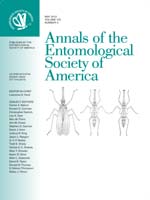Honey bees (Apis mellifera L.) bred for Varroa sensitive hygiene (VSH) selectively remove pupae infested with Varroa destructor Anderson & Trueman (Mesostigmata: Varroidae) from capped brood that is inserted into the nest. After 1 wk, remaining brood cells tend to have been uncapped and recapped, and remaining mites are mostly infertile. A primary goal of this experiment was to compare the reproductive status of mites that remained in recapped and normally capped cells after a 1-wk exposure to VSH and control colonies. Differences in distribution of fertile mites in normally capped brood cells between VSH bees and control bees may suggest that the stimulus for hygiene is related to reproduction by mites. Identification of stimuli triggering VSH behavior could be used to develop new bioassays for selective breeding of this important resistance mechanism. Combs of capped brood that were exposed to control bees had 10 times more pupae with fertile mites in normally capped brood as did VSH bees (6.7 and 0.7%, respectively). They also had 3 times more pupae with infertile mites in normally capped brood than did VSH bees (1.4 and 0.5%, respectively). Thus, VSH bees targeted fertile mites by a 3:1 ratio by either removing or uncapping and recapping their host pupae. Biased removal of mite-infested pupae with fertile mites suggested that stimuli triggering VSH behavior were enhanced by the presence of mite offspring within the brood cell. This bias for fertile mites is not seen during experiments of short 3-h duration. The differing results are discussed relative to a behavioral threshold model for hygienic behavior in honey bees in which different experimental protocols may reflect activities of honey bees having different sensitivities to pupae infested by fertile mites. In addition, mortality of mite offspring was significantly higher in recapped cells than in normally capped cells and contributed to decreased reproduction by the mites.
How to translate text using browser tools
1 May 2012
Changes in Infestation, Cell Cap Condition, and Reproductive Status of Varroa destructor (Mesostigmata: Varroidae) in Brood Exposed to Honey Bees with Varroa Sensitive Hygiene
Jeffrey W. Harris,
Robert G. Danka,
José D. Villa
ACCESS THE FULL ARTICLE
It is not available for individual sale.
This article is only available to subscribers.
It is not available for individual sale.
It is not available for individual sale.
<
Previous Article
|
honey bee
varroa mite
varroa sensitive hygiene





